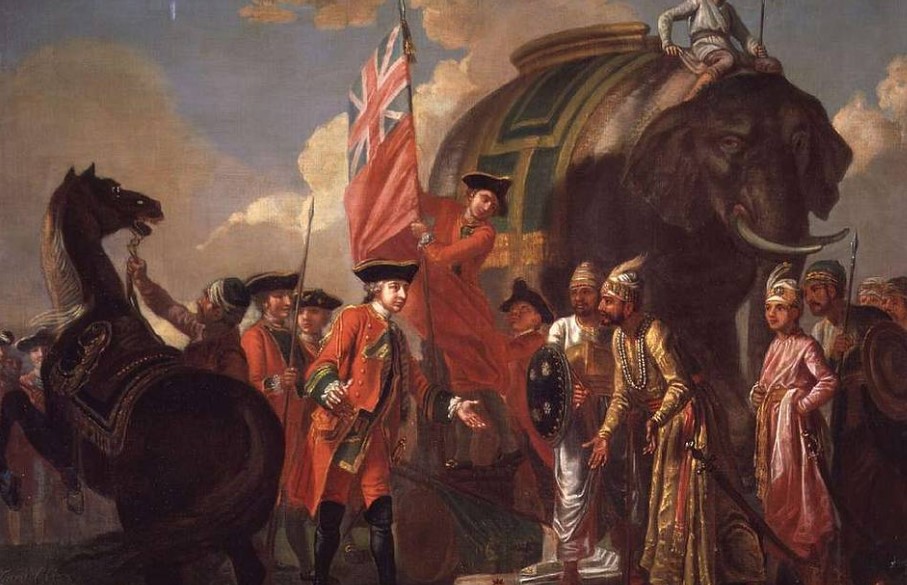
Modern History MCQs – 1 (Arrival of Europeans in India)
Most important multiple choice questions from the chapter – Arrival of Europeans in India MCQs.
Home » UPSC Study Materials » Prelims Express » Chapterwise MCQs » Modern History MCQs » Modern History MCQs – 20(Independence and Partition of India)
Independence and Partition of India MCQs with answers and explanations for UPSC and Other examinations.
1. Muslim League observed the ‘Direct Action Day’ on which among the following days ?
(a) 13 August, 1946
(b) 14 August, 1946
(c) 15 August, 1946
(d) 16 August, 1946
Correct Answer – (d) 16 August, 1946
2. Which one of the following parties was in power in the U.K. when India got independence ?
(a) Conservative Party
(b) Labour Party
(c) Liberal Party
(d) Socialist Party
Correct Answer – (b) Labour Party
3. Which among the following plans finally led to Independence of India ?
(a) Cripps Plan
(b) Wavell Plan
(c) Mountbatten Plan
(d) Cabinet Mission Plan
Correct Answer – (c) Mountbatten Plan
4. Lord Mountbatten came to India by replacing who among the following ?
(a) Lord Wavell
(b) Lord Hastings
(c) Lord Irwin
(d) Lord Canning
Correct Answer – (a) Lord Wavell
5. Who among the following gave the ‘Plan Balkan’ ?
(a) Lord Wavell
(b) Lord Hastings
(c) Lord Irwin
(d) Lord Mountbatten
Correct Answer – (d) Lord Mountbatten
6. Consider the following statements regarding Mountbatten Plan ?
1. It was accepted by both Congress and the Muslim League.
2. Princely states were given a choice to join either India or Pakistan or remain independent.
Select the correct answer using the codes given below:
(a) 1 only
(b) 2 only
(c) Both 1 & 2
(d) None of the above
Correct Answer – (c) Both 1 & 2
7. The Radcliffe Committee was appointed to perform which among the following tasks ?
(a) Solve the problem of depressed classes in India
(b) Give effect to the Independence Bill
(c) Demarcate the boundaries between India and Pakistan
(d) Enquire into the riots in East Bengal
Correct Answer – (c) Demarcate the boundaries between India and Pakistan
8. Who among the following was the President of the Congress when India got Independence ?
(a) Rajendra Prasad
(b) Vallabhbhai Patel
(c) Acharya J.B.Kripalani
(d) Jawaharlal Nehru
Correct Answer – (c) Acharya J.B.Kripalani
9. Who among the following appointed the first Prime Minister of India ?
(a) Governor General Of India
(b) British Emperor
(c) Father of Nation Mahatma Gandhi
(d) President of India
Correct Answer – (a) Governor General Of India
10. Who among the following was the first Governor General of Independent India ?
(a) C. Rajagopalachari
(b) Warren Hastings
(c) Lord Dalhousie
(d) Lord Mountbatten
Correct Answer – (d) Lord Mountbatten
11. Consider the following statements :
1. Mahatma Gandhi was the first law minister of Independent India.
2. C. Rajagopalachari was the first Indian Governor General of Independent India.
Select the correct answer using the codes given below:
(a) 1 only
(b) 2 only
(c) Both 1 & 2
(d) None of the above
Correct Answer – (b) 2 only
12. January 26,1950 was chosen for the enforcement of the Constitution due to which among the following reasons ?
(a) This was suggested by Mahatma Gandhi.
(b) Quit India Movement begun on this date
(c) To commemorate the Purna Swaraj or first Independence Day of 1930
(d) India joined commonwealth on this date
Correct Answer – (c) To commemorate the Purna Swaraj or first Independence Day of 1930
More questions are coming soon. Join us on Whatsapp for latest updates: Join CivilsCracker on Whatsapp

Most important multiple choice questions from the chapter – Arrival of Europeans in India MCQs.

Most important multiple choice questions from the chapter – Battle of Plassey and Battle of Buxar MCQs.

Most important multiple choice questions from the chapter – Social and Religious Reform Movements MCQs.

Most important multiple choice questions from the chapter – Anglo Mysore Wars and Anglo Maratha Wars MCQs.

Most important multiple choice questions from the chapter – Governor Generals of India MCQs.

Most important multiple choice questions from the chapter – Revolt of 1857 MCQs.

Most important multiple choice questions from the chapter – Organizations before Indian National Congress MCQs.

Most important multiple choice questions from the chapter – Important Sessions of Indian National Congress MCQs.

Most important multiple choice questions from the chapter – Partition of Bengal and Swadeshi Movement MCQs.

Most important multiple choice questions from the chapter – Surat Split and Lucknow Pact MCQs.

Most important multiple choice questions from the chapter – Arrival of Gandhi and Jallianwala Bagh Massacre MCQs.

Most important multiple choice questions from the chapter – Khilafat and Non Cooperation Movement MCQs.

Most important multiple choice questions from the chapter – Simon Commission and Nehru Report MCQs.

Most important multiple choice questions from the chapter – Civil Disobedience Movement MCQs.

Most important multiple choice questions from the chapter – Communal Award and Poona Pact MCQs.

Most important multiple choice questions from the chapter – Individual Satyagraha and Cripps Mission MCQs.

Most important multiple choice questions from the chapter – Quit India Movement MCQs.

Most important multiple choice questions from the chapter – Indian National Army and Royal Indian Navy Mutiny MCQs.

Most important multiple choice questions from the chapter – Cabinet Mission and Formation of Constituent Assembly MCQs.
We are adding new Notes, Chapterwise MCQs, Quizzes, Previous Years Questions everyday
We are adding new Notes, Chapterwise MCQs, Quizzes, Previous Years Questions everyday